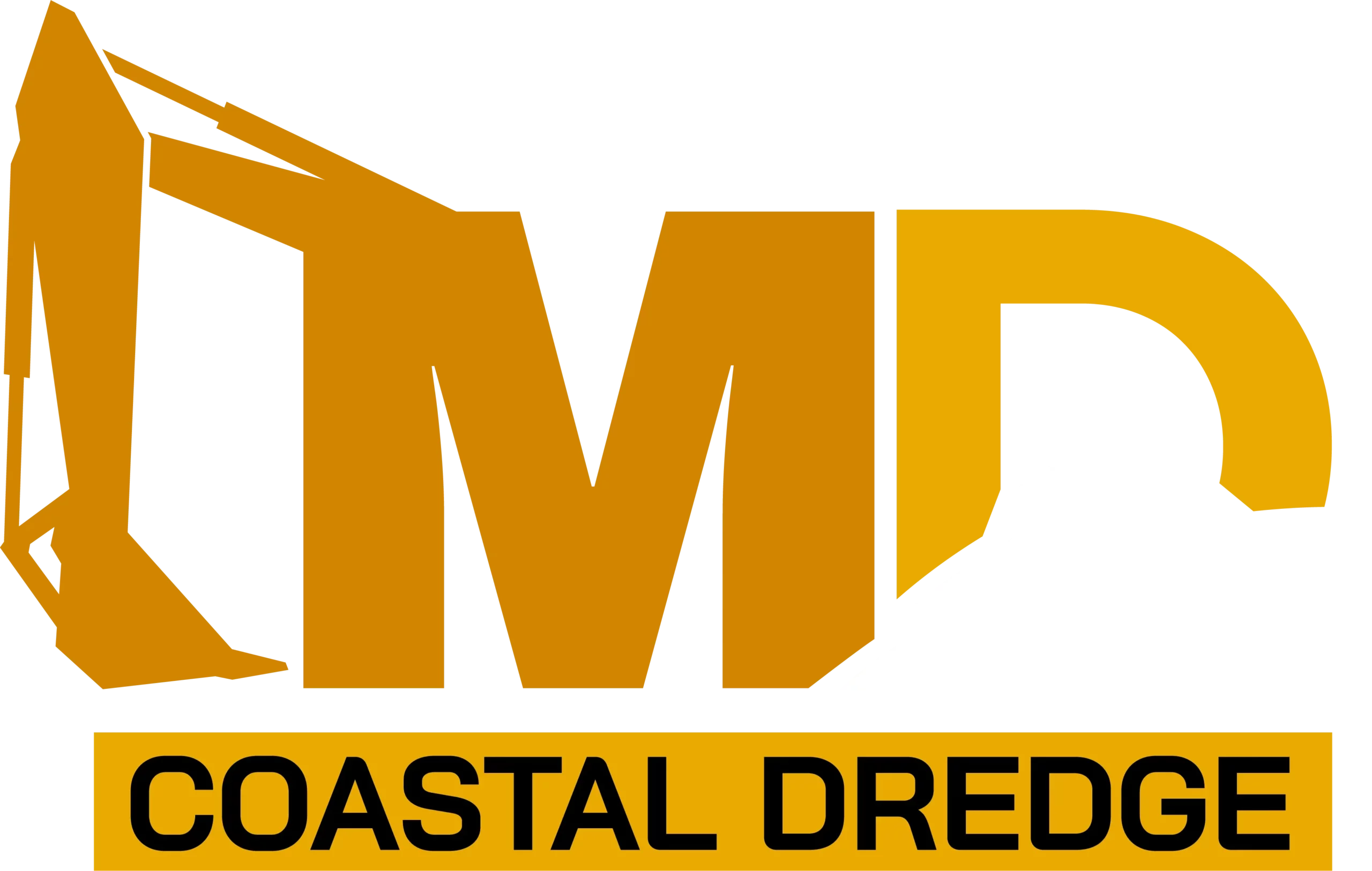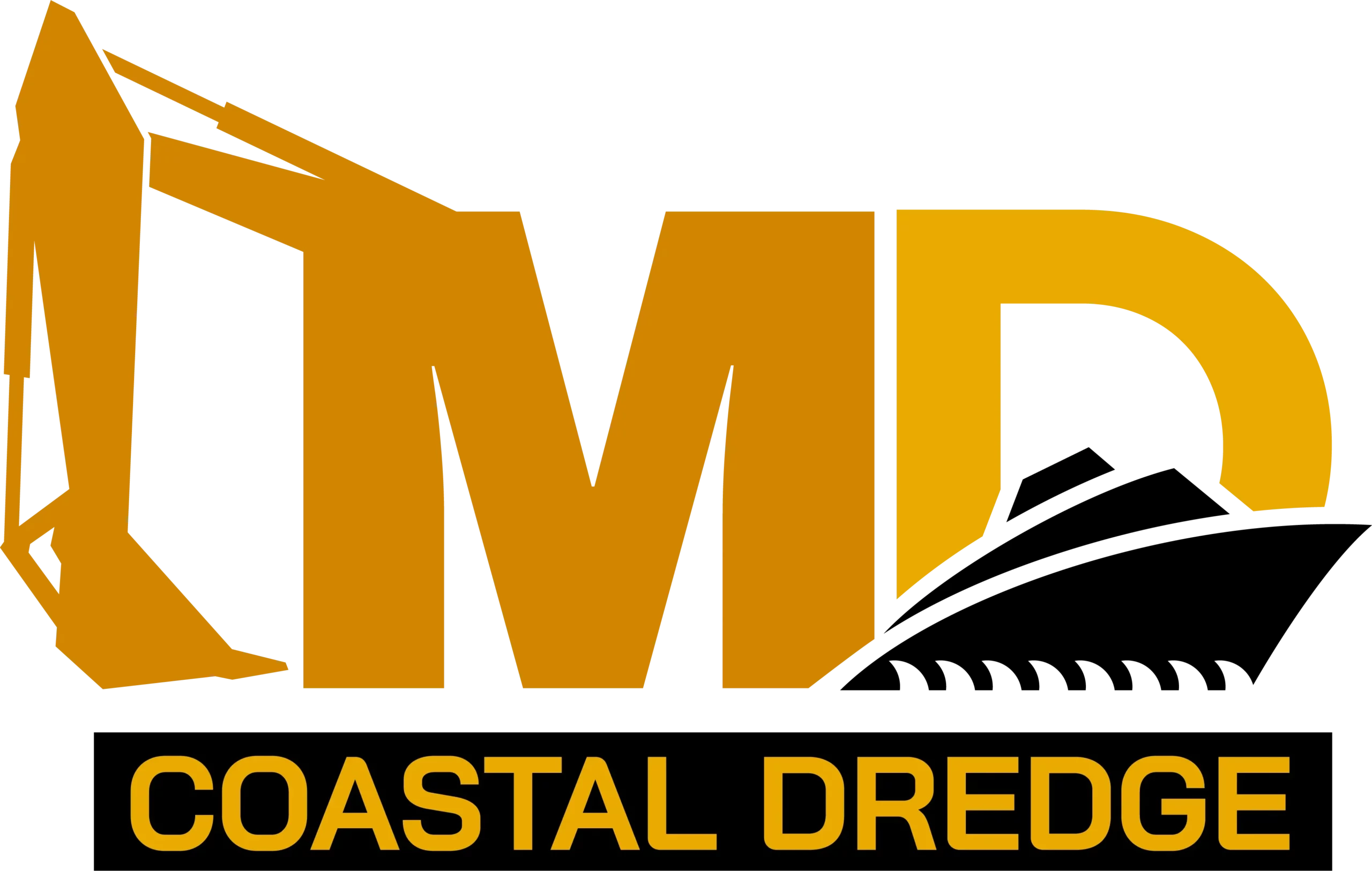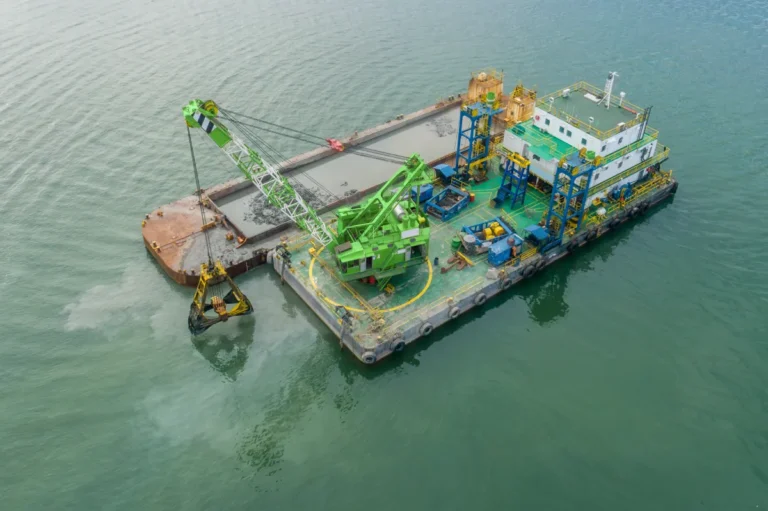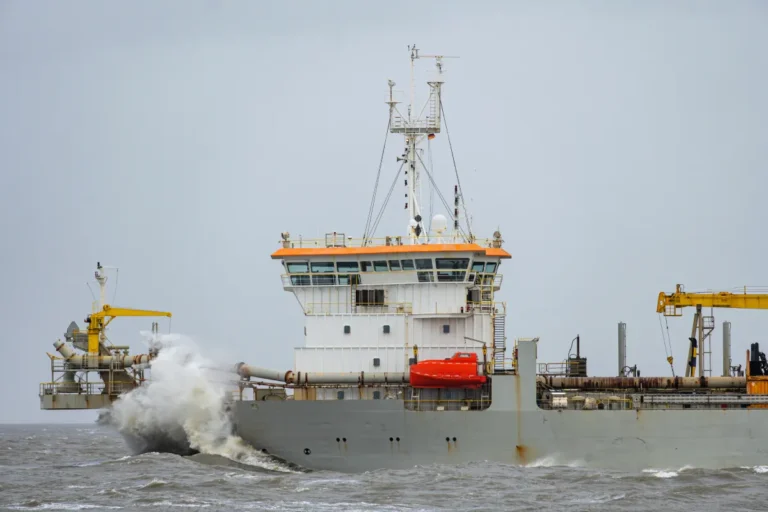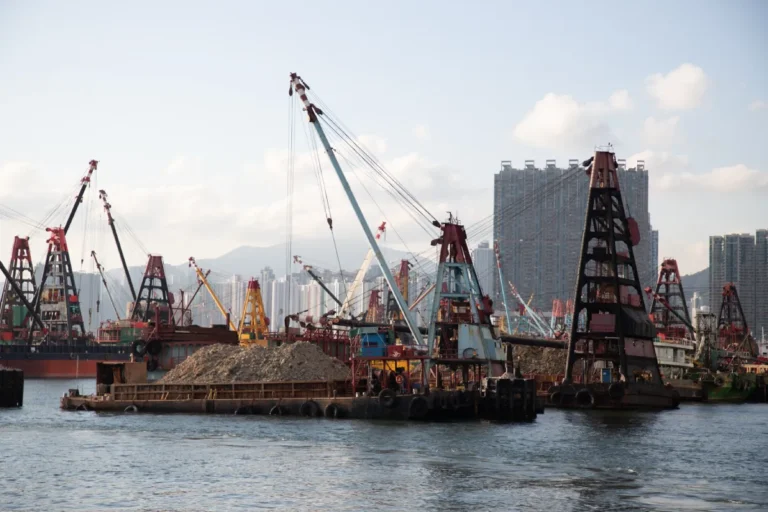Swamps, marshes, and flood-prone areas present unique challenges for any dredging or excavation project. These environments are characterized by soft, unstable ground and shallow waters, making it nearly impossible for conventional heavy machinery to operate efficiently. Standard excavators and land-based dredging equipment often sink, become stuck, or cause excessive damage to the surrounding terrain, resulting in increased project delays and operational costs.
This is where amphibious dredging services stand out. Designed specifically for waterlogged and unstable conditions, amphibious dredging combines the power of traditional dredging with advanced mobility across both land and water. Equipped with wide pontoons and specialized tracks, an amphibious excavator dredge can maneuver through soft soils, shallow wetlands, and flooded zones without the need for additional support equipment.
Unlike standard solutions that require the construction of temporary work platforms or the use of barges, amphibious excavator dredging offers direct and efficient access to challenging sites. This capability makes it a reliable choice for projects such as sediment removal, land reclamation, and flood control operations in challenging environments.
Built for the Unstable and the Unreachable
The core advantage of amphibious dredging services lies in the specialized engineering of amphibious excavator dredges. Unlike conventional excavators, these machines are mounted on buoyant pontoons that allow them to float in shallow water and maintain stability in soft or unstable terrain. This unique design eliminates the risk of sinking or staling, which is common with standard land-based equipment in swampy or flooded areas.
Key engineering features of an amphibious excavator dredge include:
- Buoyant Pontoons: Wide, sealed pontoons provide stability and enable operations in waterlogged conditions.
- Extended Reach: Long booms and arms allow effective sediment removal without the need for repositioning.
- Specialized Tracks: Heavy-duty tracks ensure smooth movement across marshes, wetlands, and semi-solid ground.
- Attachment Versatility: Amphibious excavators can be equipped with a range of attachments, including dredge pumps, clamshell buckets, and other specialized tools, to suit various dredging tasks.
Adaptability of Amphibious Excavator Dredging:
- Operates seamlessly in both shallow water and semi-solid mud.
- Eliminates the need for auxiliary platforms or barges.
- Reduces ground pressure, minimizing environmental impact on fragile ecosystems.
- Ideal for silt removal, flood mitigation, and swamp restoration projects where standard dredgers cannot function.
By combining mobility and powerful excavation capabilities, amphibious dredging services deliver consistent results in environments that are otherwise inaccessible to traditional dredging equipment.
The Mobility Secret: Floating, Crawling, and Digging

The unique mobility of amphibious excavator dredges drives the efficiency of amphibious dredging services. These machines are designed with buoyant pontoons and low ground pressure, allowing them to operate in environments where traditional excavators cannot function. Whether transitioning from dry land to swampy terrain or navigating shallow waters, the mechanics of amphibious excavator dredging ensure uninterrupted performance.
Key Mechanics of an Amphibious Excavator Dredge:
- Buoyant Pontoons: Enable the excavator to float and remain stable in shallow or partially submerged conditions.
- Seamless Mobility: Specialized tracks mounted on pontoons provide excellent traction on soft soils, wetlands, and muddy surfaces.
- Extended Reach: Long booms allow efficient sediment removal without repositioning, reducing operational downtime.
- Versatile Attachments: Equipped with dredge pumps or buckets, increasing functionality across various projects.
Benefits of Seamless Transition Between Land and Shallow Waters:
- Eliminates the need for barges or additional support vessels.
- Reduces time spent on site preparation or constructing temporary access paths.
- Allows continuous dredging and excavation in mixed terrains, including marshes and flood zones.
- Enhances project efficiency, especially for flood control, land reclamation, and wetland restoration.
Why Swamps, Marshes, and Flooded Zones Need Special Attention
Swamps, marshes, and flood-prone zones are highly sensitive ecosystems that require specialized dredging approaches to avoid long-term damage. These areas often support a diverse array of plant and animal life, making them crucial for maintaining environmental balance. Using conventional dredging or excavation equipment in such conditions can lead to habitat destruction, soil erosion, and water contamination due to the lack of adaptability of traditional machinery.
Risks of Traditional Dredging Methods:
- Excessive ground pressure from heavy machines leads to soil compaction and permanent damage to the landscape.
- Limited mobility results in equipment getting stuck or requiring extensive site preparation, which disrupts natural habitats.
- Aggressive dredging can stir up sediments, thereby affecting water quality and the health of aquatic ecosystems.
- Additional support structures, such as barges or temporary roads, can increase environmental disturbance.
How Amphibious Dredging Services Offer a Solution:
- Low-Impact Design: The wide pontoons of an amphibious excavator dredge distribute weight evenly, reducing pressure on fragile soil.
- Precision and Control: Amphibious excavator dredging ensures accurate sediment removal without unnecessary damage to surrounding areas.
- Versatility: The ability to transition seamlessly between shallow water and semi-solid ground minimizes the need for extra equipment and reduces the operational footprint.
- Eco-Friendly Operations: By minimizing the need for extensive land alterations, amphibious dredging services help preserve the natural state of wetlands and marshes.

Efficiency Without the Extra Gear
One of the biggest advantages of amphibious dredging services is the ability to complete complex dredging operations without the need for additional equipment such as barges, mats, or heavy support machinery. Traditional dredging projects often require multiple pieces of equipment to access swampy or flooded areas, which increases project costs, setup time, and logistical complexity. In contrast, an amphibious excavator dredge is designed to operate independently in challenging environments, offering both cost savings and operational efficiency.
Key Efficiency Benefits of Amphibious Excavator Dredging:
- Reduced Equipment Requirements: No need for auxiliary barges or temporary road construction, resulting in minimized setup time and expenses.
- Compact but Powerful: Despite its smaller footprint, an amphibious excavator dredge offers high digging power and reach, comparable to that of traditional dredging machines.
- Lower Project Costs: Fewer support machines mean reduced fuel consumption, maintenance, and labor requirements.
- Faster Project Completion: The ability to transition easily between water and land allows uninterrupted work, avoiding delays caused by equipment relocation.
- Streamlined Operations: Amphibious excavator dredging reduces the need for transporting large, heavy equipment to remote or waterlogged sites.
Where Amphibious Dredging Excels
The versatility of amphibious dredging services makes them the preferred choice for projects that require efficient operations in both waterlogged and semi-solid conditions. Unlike conventional dredgers, an amphibious excavator dredge can operate in environments that are difficult to access, making it suitable for a wide range of industrial, agricultural, and environmental applications.
In land reclamation projects, especially in flooded farmlands, amphibious dredging enables the removal of silt and unwanted sediment, restoring usable land quickly and efficiently. Its ability to navigate shallow water and soft terrain ensures that farmland drainage and soil rehabilitation tasks are carried out efficiently without the need for additional infrastructure or heavy equipment.
Amphibious excavator dredging is also highly effective for clearing silt and debris from stormwater channels. Maintaining proper flow in these channels helps prevent flooding during heavy rains while improving overall water quality. The combination of mobility and precision enables the removal of accumulated materials without damaging the surrounding areas.
Additionally, amphibious dredging services are essential for creating and maintaining access routes in marshlands and wetlands. Whether for construction, restoration, or ecological projects, the adaptability of an amphibious excavator dredge eliminates the need for building temporary pathways or using multiple machines, reducing both time and costs.

Future-Ready Dredging
The future of amphibious dredging services is being shaped by continuous technological advancements and the growing demand for environmentally friendly operations. Modern amphibious excavator dredges are now equipped with specialized attachments, including hydraulic cutter heads, dredge pumps, and rake attachments, enabling them to handle a wide range of tasks beyond standard dredging. These innovations not only improve operational efficiency but also expand the scope of projects that can be completed with a single machine.
A significant shift is also being made towards environmentally responsible dredging practices. Amphibious excavator dredging now incorporates energy-efficient systems, low-emission engines, and precision tools to minimize environmental impact while ensuring compliance with current environmental standards. This approach minimizes fuel consumption, prevents unnecessary sediment disturbance, and protects sensitive ecosystems.
Flexibility is another critical factor driving the future of these services. The ability to operate seamlessly across wetlands, shallow waters, and semi-solid ground makes amphibious dredging services suitable for multi-environment projects such as flood prevention, wetland restoration, and infrastructure development. With the addition of smart technologies like GPS and remote monitoring systems, operators can achieve higher accuracy, reduced downtime, and improved project outcomes.
Ready to Tackle the “Impossible”?
When it comes to swamps, marshes, and flood-prone zones, few solutions match the reliability and efficiency of amphibious dredging services. With the ability to float, crawl, and dig in the most unstable terrains, an amphibious excavator dredge delivers results where traditional equipment fails. From land reclamation to stormwater management, these machines are designed to handle the toughest conditions while minimizing environmental impact and operational costs.
If your project involves challenging or inaccessible locations, amphibious excavator dredging provides a proven method for completing the job quickly and effectively. Whether it’s clearing silt, improving water flow, or restoring wetlands, this advanced approach ensures both precision and durability.
Explore professional amphibious dredging services with MD Coastal Dredging and discover how expert solutions can transform your next project.
